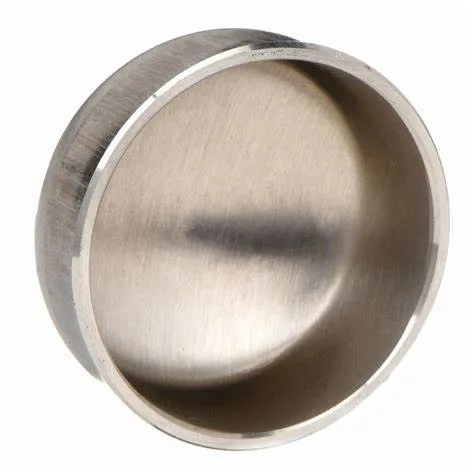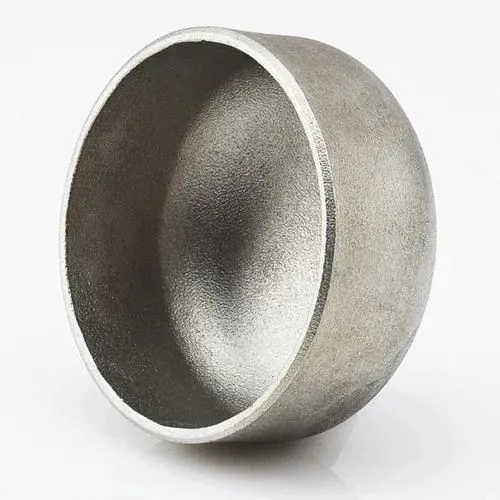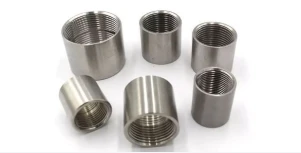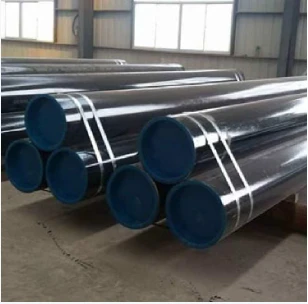ЈИС Б2311 је јапански индустријски стандард који покрива цевне спојеве за сучеоно заваривање, укључујући поклопце који се користе у системима цевовода. Поклопци за сучеоно заваривање служе за затварање краја цеви, обезбеђујући заптивање ради спречавања цурења или контаминације. Ево увода у ЈИС Б2311 капице за сучеоно заваривање:
- 1. JIS B2311 Standard:
- - ЈИС Б2311 стандард утврђује захтеве за пројектовање, димензије, материјале, производњу и испитивање фитинга за сучеоно заваривање, укључујући капе, у системима цевовода.
- - Стандард осигурава да чепови произведени у складу са ЈИС стандардима испуњавају стандарде квалитета и да су компатибилни са другим компонентама цевовода.
- 2. Капа за чеоно заваривање:
- - Поклопац за сучеоно заваривање, према ЈИС Б2311, је спој дизајниран да безбедно покрије и запечати крај цеви, пружајући заштиту и одржавање интегритета система цевовода.
- - Поклопци се користе у ситуацијама када крај цеви захтева затварање, било трајно или привремено, да би се спречило цурење, контаминација или да би се обезбедио завршетак система.
- 3. Материјал и конструкција:
- - Капе за сучеоно заваривање према ЈИС Б2311 спецификацијама доступне су у различитим материјалима као што су угљенични челик, нерђајући челик и легирани челик како би се испунили различити захтеви примене.
- - Ове капице се производе коришћењем стандардизованих метода конструкције како би се осигурала чврста веза без цурења када су заварени на крај цеви.
- 4. Примена и предности:
- - Капе за сучеоно заваривање налазе примену у различитим индустријама, укључујући нафту и гас, хемијске процесе, постројења за пречишћавање воде и више где крајеви цеви морају бити безбедно затворени.
- - Поклопци пружају заштиту крајевима цеви од елемената околине, спречавају контаминацију и помажу у одржавању чистоће и интегритета цевоводног система.
- 5. Монтажа и заваривање:
- - Одговарајуће праксе уградње, укључујући исправно поравнање, припрему краја цеви и технике заваривања, су од суштинске важности када се постављају поклопци за сучеоно заваривање како би се обезбедило чврсто и непропусно заптивање.
- - Заваривање је уобичајена метода за причвршћивање капа на цеви, обезбеђујући сигурно и трајно затварање које може да издржи притисак, температурне варијације и проток течности унутар система.
- Укратко, ЈИС Б2311 поклопци за сучеоно заваривање су кључне компоненте које се користе у системима цевовода за безбедно заптивање и заштиту крајева цеви. Ове капице су у складу са стандардизованим захтевима како би се обезбедио квалитет, поузданост и компатибилност у индустријским применама где су затварање цеви и заштита неопходни.
What Is a Butt Welding Cap and How Is It Used in Industrial Piping?
In industrial piping systems, end-of-line sealing and branch closures require robust solutions. A butt welding cap serves as a critical component for terminating pipes securely. By providing a seamless, welded closure, this fitting maintains system integrity, prevents leaks, and supports compliance with industry standards.
What Is a Butt Welding Cap?
A butt welding cap—also called a pipe end cap or buttweld end cap—is a round fitting designed to close off the end of a pipe. It’s manufactured to match the pipe’s outer diameter and schedule, with either a hemispherical or flat face. To install, both the pipe end and cap are beveled to form a V‑groove, enabling full‑penetration, fusion welds. Common materials include carbon steel, stainless steel, nickel alloys, and other engineered grades, chosen to satisfy pressure, temperature, and corrosion‑resistance requirements.
How Is Butt Welding Cap Used in Industrial Piping?
Butt welding caps find application across oil & gas, petrochemical, power generation, water treatment, and general process industries for both permanent and temporary closures. During hydrostatic testing, technicians install caps to seal off sections of piping while monitoring for leaks. In new construction or retrofit projects, caps terminate branch lines, future tie‑in spools, or dead‑end mains until system expansion. Welders prepare each joint by cleaning and beveling surfaces, aligning the cap precisely, and executing a root pass followed by filler passes per the qualified Welding Procedure Specification (WPS). Post‑weld heat treatment and non‑destructive examination (NDE)—such as radiography or ultrasonic testing—verify weld integrity and compliance with ASME B16.9 and related standards. Additionally, temporary caps enable safe isolation during maintenance, allowing for segment testing and dewatering under regulatory protocols.
Benefits and Best Practices
Butt welding caps offer a smooth‑bore transition that minimizes flow disruption and stress concentration. Their full‑penetration welds deliver exceptional structural strength and leak resistance. To optimize performance, engineers should:
Select caps with matching material grades and wall thicknesses
Adhere to proper bevel angles and joint fit‑up tolerances
Follow qualified WPS protocols rigorously
Consider cladding or protective coatings in corrosive environments to extend service life
Regular inspection and thorough documentation ensure long‑term reliability and safe operation under demanding conditions.
Butt welding caps are indispensable components for achieving durable, leak‑proof pipe terminations in a wide range of industrial applications.
Butt Welding Cap FAQs
What is a butt welding cap?
|
What materials are commonly used?
|
What standards govern butt welding caps?
|
How are butt welding caps installed?
|
Where are butt welding caps typically used?
|
What are the advantages of threaded caps?
|
















